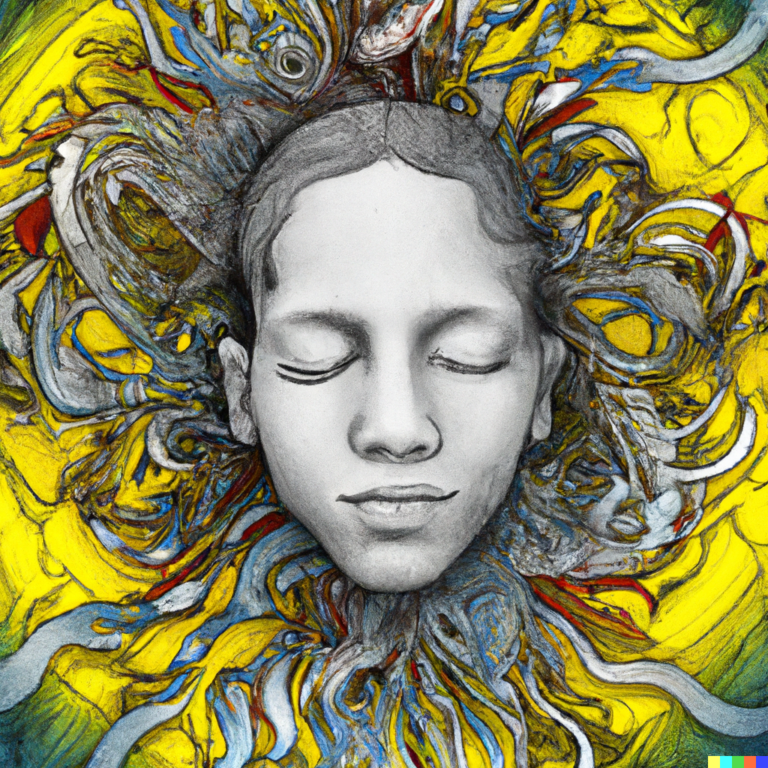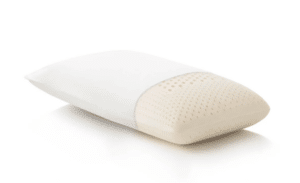Fever dreams are a phenomenon that many people have experienced at one time or another, but what exactly are they? In essence, fever dreams are vivid, bizarre, and often unsettling dreams that occur when an individual has a fever. These dreams can be far more intense than regular dreams and are typically associated with a higher body temperature caused by illness or infection.
It’s no secret that fever dreams are a widely shared experience during times of sickness. In fact, many people can recall at least one instance where they had an incredibly vivid dream while battling a fever. These dreams are not only memorable for their bizarre content but also for the heightened emotions and vivid imagery that accompany them. Despite their prevalence, fever dreams remain a somewhat enigmatic part of the human experience, leaving many to wonder about their causes, effects, and potential coping strategies.
The aim of this article is to unravel the mystery surrounding fever dreams by examining the science behind them, identifying their common causes, and exploring their potential impact on our mental and physical well-being. Additionally, we’ll delve into effective coping strategies that can help alleviate the distress and discomfort often associated with fever dreams. By gaining a better understanding of this curious phenomenon, we can better prepare ourselves to face these strange and sometimes terrifying nocturnal experiences and emerge from them unscathed.

The science behind fever dreams
Fever dreams are intrinsically linked to an elevated body temperature, which is the body’s natural response to fighting off infection. When our body temperature rises, it directly affects the functioning of our brain, as the brain is highly sensitive to changes in temperature. As our body works to maintain a stable temperature, the increase in heat can cause our brain to work overtime, which in turn leads to an increase in brain activity during sleep. This heightened brain activity is thought to be one of the primary factors contributing to the vivid and intense nature of fever dreams.
How fever affects the brain and sleep
In addition to an increase in brain activity, fever can also impact the quality and structure of our sleep. When we are sick, our body enters a state of heightened alert, releasing inflammatory chemicals called cytokines, which can disrupt our sleep patterns. Fever can cause our sleep to be lighter and more fragmented, leading to frequent awakenings throughout the night. This disruption in sleep architecture, combined with increased brain activity, can create the perfect environment for fever dreams to occur.
Common fever dream themes and experiences
One of the most striking aspects of fever dreams is their incredible vividness and intensity. The images and emotions experienced during fever dreams can be so powerful that they can feel more like real-life experiences than simple dreams. This can make it difficult to distinguish between reality and the dream world, further adding to the unsettling nature of these nocturnal episodes.
Unsettling or bizarre content
Fever dreams are often characterized by their unusual, bizarre, and sometimes frightening content. These dreams may feature strange and distorted environments, odd combinations of familiar and unfamiliar characters, and scenarios that defy logic and reason. The unsettling nature of these dreams can contribute to increased feelings of anxiety and distress during sleep, which may exacerbate the overall discomfort associated with illness.
Distorted sense of time
Another common feature of fever dreams is the distortion of time. Time may seem to pass incredibly slowly or at an unnervingly rapid pace, further disorienting the dreamer and adding to the overall surreal quality of the experience. This distortion of time can make it challenging to distinguish between the dream world and reality, leaving the individual feeling disoriented and confused upon awakening.

Causes of Fever Dreams
Infection and the immune system
One of the primary causes of fever dreams is the body’s inflammatory response to infection. When our immune system detects an invader, such as bacteria or viruses, it releases chemicals called inflammatory mediators to help fight off the infection. This response is crucial for our body’s defense against pathogens, but it can also lead to an increase in body temperature and the onset of fever dreams.
Release of cytokines and their impact on sleep
Cytokines are proteins released by the immune system during an infection, which help regulate the inflammatory response. While these chemicals play a vital role in protecting our body, they can also have a significant impact on sleep. Cytokines can disrupt our sleep patterns, leading to lighter, more fragmented sleep. This change in sleep architecture, coupled with the increased brain activity caused by fever, sets the stage for fever dreams to occur.
Antipyretics
Some medications, such as antipyretics (fever-reducing drugs like ibuprofen or acetaminophen), can indirectly contribute to fever dreams. While these medications can help lower body temperature and alleviate some fever symptoms, they may also disrupt sleep and increase the likelihood of vivid and intense dreams. It is essential to follow the recommended dosages and consult with a healthcare professional if fever dreams persist despite medication use.
Other medications that can contribute to fever dreams
Certain medications, aside from antipyretics, can also contribute to fever dreams. Some antibiotics, antivirals, and other drugs used to treat infections may cause changes in sleep patterns or affect brain function, increasing the likelihood of fever dreams. It is important to discuss any concerns regarding fever dreams with your healthcare provider, as they may be able to recommend alternative medications or strategies to alleviate the issue.
Dehydration and its role in exacerbating fever dreams
Dehydration is a common issue during illness, and it can play a significant role in the onset and intensity of fever dreams. When our body is dehydrated, it may struggle to regulate temperature effectively, leading to increased brain activity and disturbed sleep. Ensuring proper hydration during illness can help alleviate the frequency and intensity of fever dreams.
Sleep deprivation and fever dreams
Sleep deprivation can also contribute to fever dreams. When we are sleep-deprived, our brain may attempt to make up for the lost rest by entering a state of heightened activity during sleep, which can lead to vivid and intense dreams. Additionally, sleep deprivation can further disrupt our sleep patterns, exacerbating the sleep disturbances caused by fever and increasing the likelihood of fever dreams. Prioritizing rest and maintaining a consistent sleep schedule during illness can help reduce the occurrence of fever dreams.

Effects of Fever Dreams
Mental health impact
The vivid and unsettling nature of fever dreams can have a significant impact on an individual’s mental health, particularly in terms of anxiety and stress. The bizarre and sometimes frightening content of these dreams can leave a person feeling anxious and on edge, even after waking up. This heightened anxiety can, in turn, make it more difficult for the individual to fall back asleep, leading to a vicious cycle of sleep disturbances and emotional distress.
Impact on sleep quality
Fever dreams can also negatively impact the overall quality of sleep. The vivid imagery and intense emotions experienced during fever dreams can cause frequent awakenings and sleep fragmentation, preventing the individual from achieving the restorative stages of deep sleep. This disruption in sleep architecture can contribute to feelings of fatigue and sluggishness during the day, further exacerbating the mental and physical toll of illness.
Physical health implications
Adequate sleep is essential for maintaining a healthy immune system and promoting recovery from illness. However, the presence of fever dreams can disrupt the restorative sleep needed for healing. As a result, the individual may experience prolonged recovery times and increased vulnerability to complications related to their illness. Ensuring good sleep hygiene and addressing fever dreams through coping strategies can help support a more efficient recovery process.
Disrupted sleep patterns
Fever dreams can also have a lasting impact on an individual’s sleep patterns, even after the fever has subsided. The anxiety and stress associated with these vivid dreams can make it difficult for a person to establish a regular sleep schedule, leading to chronic sleep disturbances and daytime fatigue. Addressing the root causes of fever dreams and implementing effective coping strategies can help promote healthier sleep patterns and improve overall well-being.

Coping Strategies for Fever Dreams
One of the most effective ways to reduce the occurrence and intensity of fever dreams is by keeping the body cool during a fever. Some methods to help cool down include using a damp washcloth on the forehead, taking a lukewarm bath or shower, and using a fan to circulate air in the room. It’s important to avoid using ice or cold water, as this can cause the body to constrict blood vessels and retain heat.
Importance of proper hydration
Staying well-hydrated is essential for managing fever dreams, as dehydration can exacerbate both fever and sleep disturbances. Be sure to drink plenty of fluids, such as water, herbal teas, or electrolyte-replacement drinks, to help replenish the body and support temperature regulation. Avoid caffeine and alcohol, as they can contribute to dehydration and disrupt sleep.
Sleep environment adjustments
Creating a comfortable sleep environment can help reduce the occurrence of fever dreams. Maintaining an optimal bedroom temperature, typically between 60-67 degrees Fahrenheit (15-19 degrees Celsius), can support better sleep and help the body cool down more effectively during a fever.
Comfortable bedding and sleepwear
Using breathable, moisture-wicking bedding and sleepwear can also help manage fever dreams by reducing overheating and ensuring a more comfortable sleep environment. Opt for materials such as cotton, bamboo, or linen, which can help regulate body temperature and wick away sweat.
Stress reduction techniques
Practicing deep, slow breathing exercises before bedtime can help calm the mind and reduce anxiety associated with fever dreams. Techniques such as diaphragmatic breathing or the 4-7-8 breathing method can promote relaxation and help prepare the body for restful sleep.
Progressive muscle relaxation
Progressive muscle relaxation is a technique that involves tensing and relaxing different muscle groups to release tension and promote relaxation. Practicing this method before sleep can help reduce stress and anxiety, making it easier to fall asleep and potentially reducing the occurrence of fever dreams.
Visualization and guided imagery
Using visualization or guided imagery techniques can help calm the mind and encourage more positive, peaceful dreams. Before sleep, envision a peaceful, calming scene or follow along with a guided imagery recording to help redirect the mind away from anxiety and toward a more relaxed state.
Seeking medical advice
If fever dreams persist or become increasingly distressing, it’s essential to consult with a healthcare professional. Persistent fever dreams may be a sign of an underlying medical issue that requires further evaluation and treatment.
Potential treatments and interventions
Depending on the underlying cause of the fever dreams, a healthcare provider may recommend specific treatments or interventions, such as adjusting medication dosages, prescribing sleep aids, or referring the individual to a sleep specialist. By addressing the root causes of fever dreams and following the guidance of a healthcare professional, individuals can work toward achieving better sleep and improved overall well-being.

In this article, we have delved into the enigmatic world of fever dreams, examining their scientific underpinnings, common themes, and potential effects on both mental and physical well-being. We’ve also explored the various factors that contribute to fever dreams, such as infection, medications, dehydration, and sleep deprivation, and have provided coping strategies that can help alleviate the distress and discomfort associated with these nocturnal experiences.
Fever dreams are a complex phenomenon that can leave individuals feeling disoriented, anxious, and fatigued. While we’ve covered many aspects of fever dreams, it’s important to recognize that each person’s experience may differ, and there’s still much to learn about this intriguing aspect of human sleep and illness.
By employing the coping strategies discussed, such as maintaining proper hydration, adjusting the sleep environment, practicing stress reduction techniques, and seeking medical advice when necessary, individuals can better manage fever dreams and work toward improved sleep and overall well-being. Remember, it’s essential to listen to your body, prioritize rest, and seek help from a healthcare professional if fever dreams persist or become increasingly distressing. With the right tools and support, we can better navigate the strange and sometimes terrifying world of fever dreams and emerge stronger and healthier.
Further Reading
While fever dreams are not as widely researched as other aspects of sleep science, there are several scientific articles and studies that have explored related topics, such as sleep disturbances during fever, the impact of illness on sleep, and the effects of increased body temperature on brain function. Here are five scientific articles that touch on aspects relevant to fever dreams:
Krueger, J. M., & Majde, J. A. (2003). Humoral links between sleep and the immune system: research issues. Annals of the New York Academy of Sciences, 992(1), 9-20. This article discusses the relationship between sleep and the immune system, examining the impact of cytokines and other immune-related chemicals on sleep regulation and the potential consequences for sleep disturbances during illness.
Opp, M. R. (2005). Cytokines and sleep. Sleep Medicine Reviews, 9(5), 355-364. This review explores the role of cytokines, proteins released during infection, in sleep regulation and their potential impact on sleep disturbances such as fever dreams.
Horne, J. A., & Shackell, B. S. (1987). Slow wave sleep elevations after body heating: proximity to sleep and effects of aspirin. Sleep, 10(4), 383-392. This study investigates the impact of increased body temperature on slow-wave sleep and the potential influence of antipyretic medications, such as aspirin, on sleep patterns.
Moldofsky, H. (1995). Sleep, neuroimmune, and neuroendocrine functions in fibromyalgia and chronic fatigue syndrome. Advances in Neuroimmunology, 5(1), 39-56. This article focuses on sleep disturbances in individuals with fibromyalgia and chronic fatigue syndrome, highlighting the potential role of inflammatory processes and immune system activation in sleep disruption and vivid dreaming.
Saper, C. B., Romanovsky, A. A., & Scammell, T. E. (2012). Neural circuitry engaged by prostaglandins during the sickness syndrome. Nature Neuroscience, 15(8), 1088-1095. This review discusses the neural mechanisms involved in the sickness syndrome, a set of symptoms that occur during illness, including fever and sleep disturbances. The article delves into the role of prostaglandins, a class of inflammatory mediators, in triggering these symptoms and their potential impact on sleep and dreaming.
While these articles may not focus solely on fever dreams, they can provide valuable insights into the underlying mechanisms and factors that contribute to sleep disturbances during illness, which may ultimately help us better understand the complex phenomenon of fever dreams.

Fever Dreams in Popular Culture
Fever dreams have long captivated the imagination of writers, filmmakers, and artists, making their way into various forms of popular culture. These vivid and often bizarre dreams can serve as a source of inspiration for creative works, reflecting the subconscious mind’s ability to conjure up surreal and unsettling imagery. Here are a few examples of how fever dreams have been portrayed or referenced in popular culture:
Literature: Many authors have incorporated fever dreams into their narratives, using the altered state of consciousness to reveal characters’ inner turmoil or to create surreal and fantastical scenarios. For instance, in Charlotte Brontë’s “Jane Eyre,” the protagonist experiences fever dreams when she is ill, which heighten her emotional state and serve as a catalyst for personal growth.
Film: Fever dreams have also been depicted in movies, often as a means of exploring the characters’ psyche or creating visually striking sequences. For example, the film “Trainspotting” features a memorable fever dream scene in which the protagonist, suffering from withdrawal symptoms, descends into a nightmarish world filled with bizarre and horrifying imagery.
Music: Some musicians have used fever dreams as a theme or inspiration for their work, capturing the sense of disorientation and vividness that can accompany these experiences. The Beatles’ song “A Day in the Life” references fever dreams in the lyrics, “I read the news today, oh boy / Four thousand holes in Blackburn, Lancashire / And though the holes were rather small / They had to count them all / Now they know how many holes it takes to fill the Albert Hall / I’d love to turn you on.” The song’s surreal imagery and dreamlike quality evoke the feeling of fever dreams.
Television: TV shows have also depicted fever dreams as a way to explore characters’ subconscious fears and desires or create unusual and visually compelling scenes. In the series “Buffy the Vampire Slayer,” the protagonist experiences fever dreams while battling a flu, which forces her to confront her deepest fears and insecurities.
Visual arts: Artists have long been inspired by the surreal and otherworldly quality of fever dreams, with some works directly referencing or evoking these experiences. For example, the paintings of Salvador Dalí, known for their dreamlike imagery and bizarre juxtapositions, can be seen as visual representations of fever dreams.
Overall, fever dreams have left a lasting impact on popular culture, serving as a source of inspiration and fascination for creators across various mediums. These portrayals not only reflect our collective fascination with the subconscious mind but also provide insight into the human experience of illness and altered states of consciousness.



















